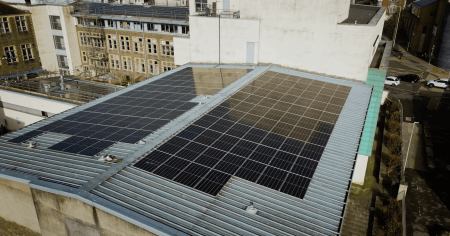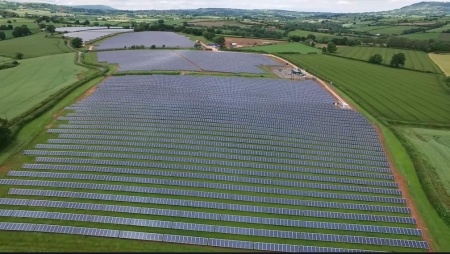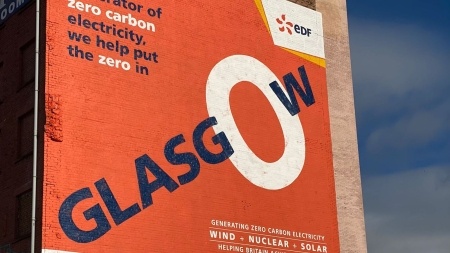
Setting up a multi-party Corporate PPA for Tesco
Despite Corporate Power Purchase Agreements being the talk of the sustainable business energy town, the number of these deals being concluded is still very low. How low? Well, it’s difficult to come up with a precise number but if you take all the renewables in the UK now, CPPAs account for less than five per cent of total renewable generation on the grid.
Why such low take up? Because they’re more complex and long term than most businesses want for their energy supply.
Imagine what it takes to put together a string of CPPAs with different generators with different technologies of different scales and connection types, for a single business. Well, that’s what Tesco and EDF have achieved.
Here's how
EDF has worked with Tesco and their advisors to deliver a corporate PPA structure which supports the delivery of new renewable generation projects. Through bringing new low carbon generation to the grid, Tesco are making a real contribution to decarbonising the energy supply and reducing emissions.
The PPAs help Tesco meet its RE100 sustainability targets in the most responsible way and crucially, positively contributes towards the UK meeting its zero carbon targets.
How it funds new renewables
The deal will support the development of four new build wind farms and five new solar farms. Each project is financed without public subsidies and so the structure of the deal is critical to the construction of each site.
With Tesco’s long-term commitment to purchase the power at agreed prices, the retailer is helping nine new renewable generation projects clear financial hurdles. In short, funders are happy to commit to renewable projects that can demonstrate they will cover the cost of capital of their project. One of the largest risks they’re concerned about is the variable price of power on the wholesale markets. What if there is a sustained dip in prices and the wind farm can’t sell power at a high enough price to cover their investment? Securing a long-term price with a credible buyer like Tesco removes this risk.
More projects, more parties, more complexity
Although it invites complexity, by working with different developers and different technologies, Tesco is spreading risks. If a project or generator runs into operating problems, it won’t upset Tesco’s overall goal.
Much has been made of the complexity of Corporate PPAs and a drive to simplify them with standardised contract templates. In this deal, we started with that goal – agree the first contract and use that as a template for other projects. In practice, it wasn’t that simple. Major differences between the projects within the portfolio had to be catered for.
Multi-party: Four different developers are building the nine renewable power sites that will provide Tesco’s new supply of renewable energy. Feeding into each project is a unique mix of equity owners, funders, advisors and asset managers. Add all those together and you see there are multiple stakeholders to satisfy to agree this suite of contracts.
Scale and connection: Variances in the scale, technology and connection type for nine projects add technical challenges. One of the projects is large enough to be a licensed generator in its own right. That means it needs to become a registered trading party on the UK power system and take on certain responsibilities and costs. The other projects are license exempt which means they trade directly through EDF. Some projects are large enough or located in places that demand they are connected to the national transmission network. Other projects are connected to the grid via the local distribution network. This can impact grid obligations and the way that grid charges are applied. For example, large projects connected to the Transmission Network are obliged to provide balancing services to the National Grid which can mean that the generator is asked to curtail its load from time to time in National Grid’s Balancing Mechanism.
Operating different technologies – Once operational, each project will be interfacing directly with EDF with real time and forecast output data. But the way they do that will be dependent upon the specific turbine or panel technology and the specific technical kit on each site. This means each contract needs to specify how the site is connected to the grid, who is responsible for what, how the power is transferred to EDF and how real-time and forecast information is transferred.
How it helps Britain towards achieving Net Zero
By overcoming all these challenges and bringing on additional projects, Tesco is positively helping the UK to meet its Net Zero targets. Other businesses may choose to do the same, but the complexity, commitment, and risks are not for everyone. It is not a one size fits all business. It is estimated that the amount of power that will need to be generated annually will need to double by 2050 if we’re to meet our Net Zero commitments.
In addition, the amount of low carbon power will have to quadruple! So, the landscape will continue to shift for many years to come. Organisations looking to reach Net Zero will continue to seek new and innovative ways to purchase their zero-carbon power, balancing the drive for robustness and authenticity with their own unique circumstances. It’s essential that every business has a supply contract structure that suits them, so a CPPA doesn’t work for everyone. But, despite their complexity CPPAs ensure maximum authenticity of carbon credentials and can result in additional renewable generation being added to the UK mix. And working with experts, like those in the EDF team, can make the whole process much simpler.


